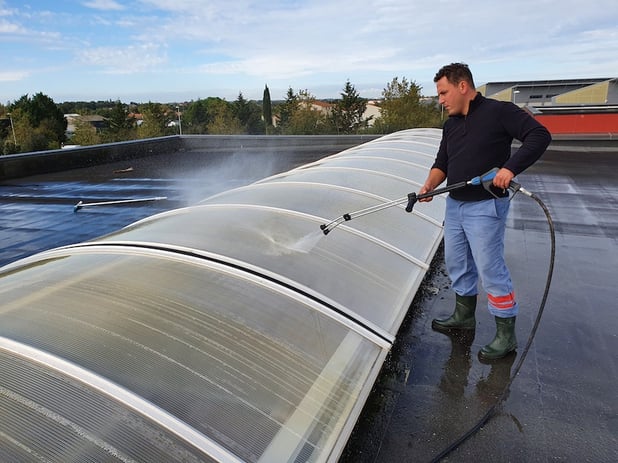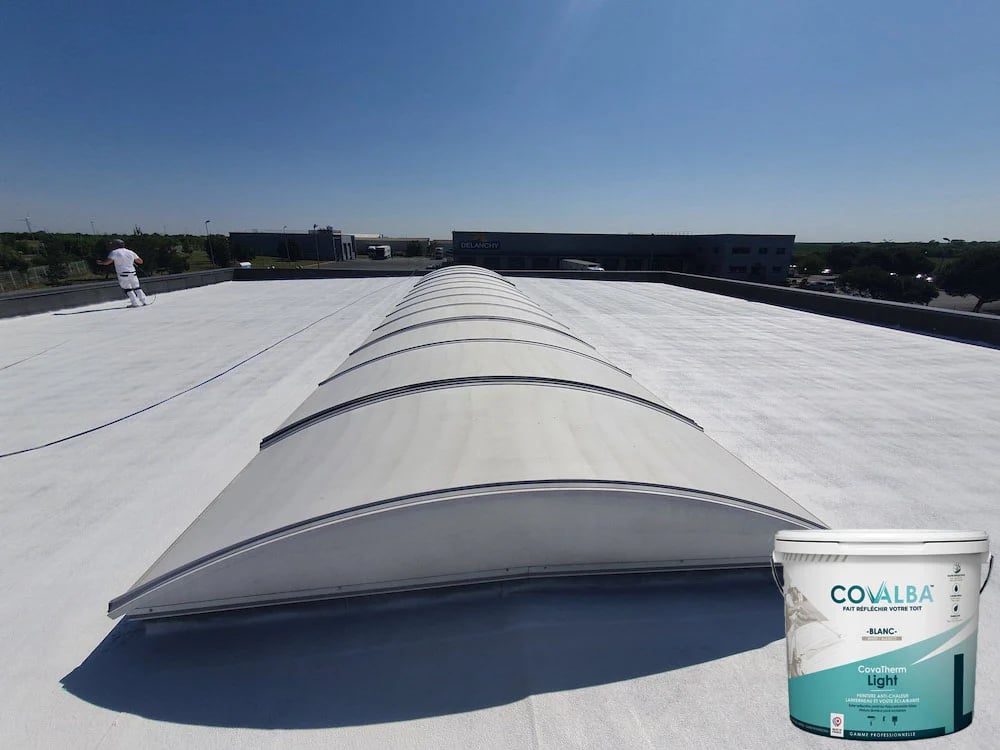Thermal insulation of buildings is a real concern for professionals. Indeed, because of their surface area, corporate structures are more difficult to insulate than those of private individuals. Despite this fact, there are now methods available to optimize the insulation and energy performance of professional structures. There are methods to suit every type of building. In the particular case of structures with polycarbonate roofs, it's a good idea to paint the polycarbonate for a cool roof.
What is polycarbonate?
The list of materials used in the construction of professional buildings is vast. Between cladding, bituminous waterproofing solutions and plastics, companies are spoilt for choice. Among plastic solutions, there's one material that's been widely used: polycarbonate for roofing. Treating polycarbonate saves on energy bills, as well as on the overall cost of roof treatment.

This resistant material, derived from plastic, is obtained by polymerization. It has a wide range of applications. Polycarbonate can be found in DVDs, car windows and helmets. Thanks to its interesting mechanical properties, solid construction and thermal resistance, polycarbonate is also used as plastic glazing for roofs. In this form, it generally takes the form of a dome to let light into the building.
The thermal resistance of polycarbonate ranges from -100 degrees to 120 degrees Celsius, ensuring that it won't be damaged by temperatures in mainland France.
On a similar subject, read our review of polycarbonate roofs.
Why paint polycarbonate?
Although polycarbonate has a certain thermal resistance, it tends to absorb heat. In winter, this is not a problem for professionals. In summer, however, this characteristic can become a real problem. With temperatures rising every year, and heatwaves multiplying, it's more important than ever to keep premises cool in summer.
In business premises such as factories and warehouses, the heat sinks provided by polycarbonate domes can quickly turn into heat sinks when the sun is shining. This poses a number of health risks, including hot-head effect, glare and eyestrain.
With this in mind, it can be very worthwhile to optimize the thermal performance of your polycarbonate glazing to avoid the consequences of excessive heat in business premises.
Among the various options available, we can mention polycarbonate anti-heat film or polycarbonate resin. However, neither solution is strong enough to fully counter the effects of the sun's rays.
There is, however, one last option for reducing heat: cool roof paint for polycarbonate.
Here's our advice on choosing the right reflective paint.
What is a cool roof for polycarbonate roofs?
Cool roofing is a thermal insulation method used on flat roofs or roof terraces. The method arrived in France a few years ago and is growing in popularity. This is due to the capabilities of this solution: the cool roof naturally reduces the temperature of a building in summer, sometimes by more than ten degrees, without consuming energy. In other words, there's no need to use electricity to operate the solution.

It's a sustainable way of saving money on your energy bill, while complying with the tertiary sector decree for the professionals concerned.
To install a cool roof solution on a roof, a white coating must first be applied.
Depending on the application, this coating may take the form of a reflective paint, a waterproofing membrane or a liquid waterproofing. In the case of polycarbonate, the cool roof takes the form of a reflective paint that reflects the sun's rays. Thanks to its particularly low albedo, this paint ensures that heat reaching the roof is reflected back.
What kind of paint should be applied to polycarbonate?
While the bitumen or asphalt part of the roof is protected by a white anti-heat paint, it is not possible to apply this directly to polycarbonate canopies. A specific product has been developed by Covalba to meet this need: solar paint for polycarbonate.
The technical characteristics of this lacquer have been designed to preserve all the advantages of polycarbonate, while optimizing its thermal performance over the long term. To achieve this, CovaTherm solar lacquer is capable of rejecting up to 98% of the sun's UV rays and 75% of solar energy.
Application of the anti-UV lacquer is a multi-stage process. First, the polycarbonate is thoroughly cleaned, as the lacquer preserves the luminosity generated by the plastic. The paint is then applied in two coats, either with a roller or by spraying. As soon as the application is complete, the solar lacquer is already active, and the polycarbonate's luminosity is guaranteed up to 65% of its original capacity.
To find out more :